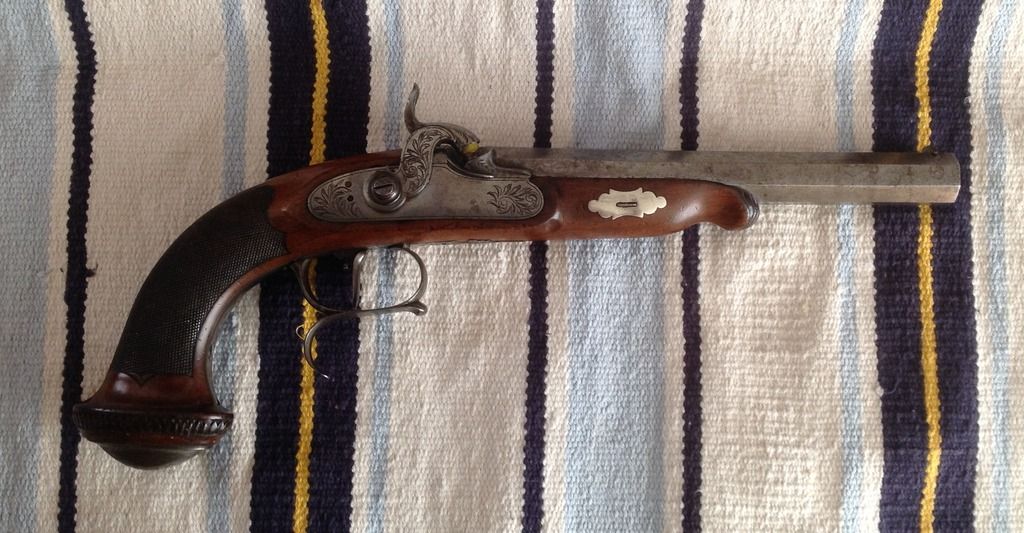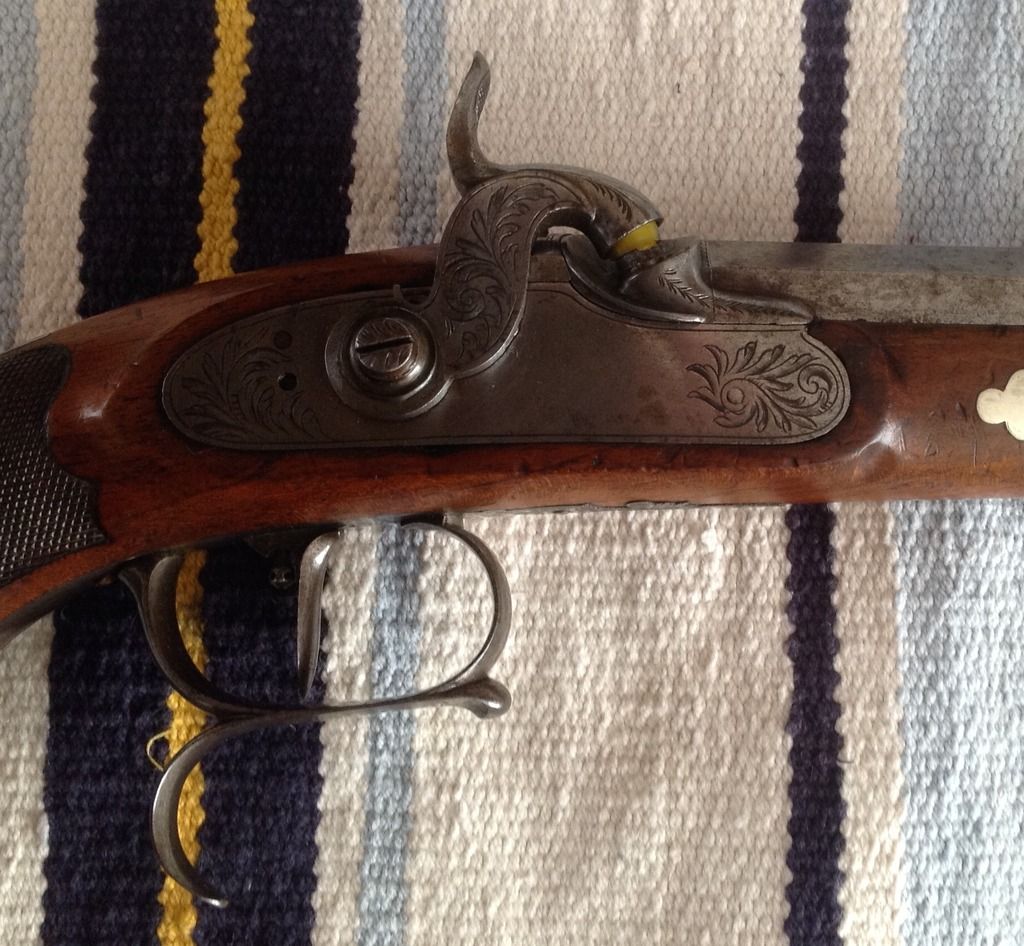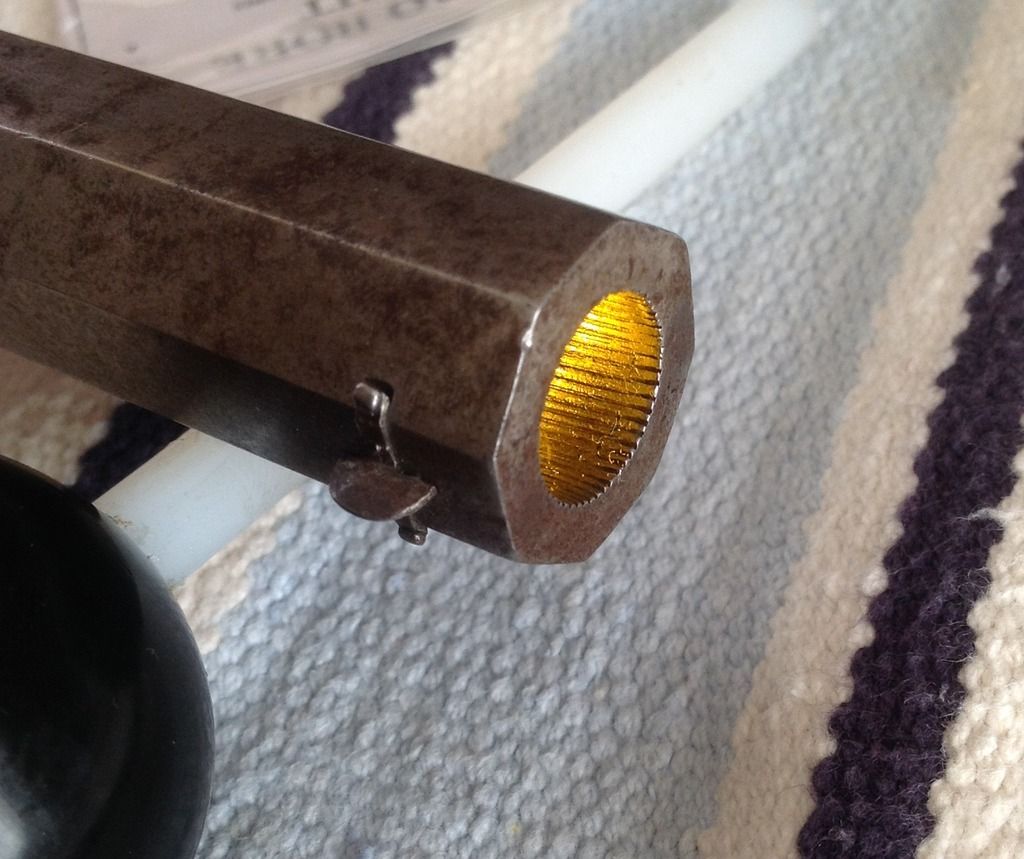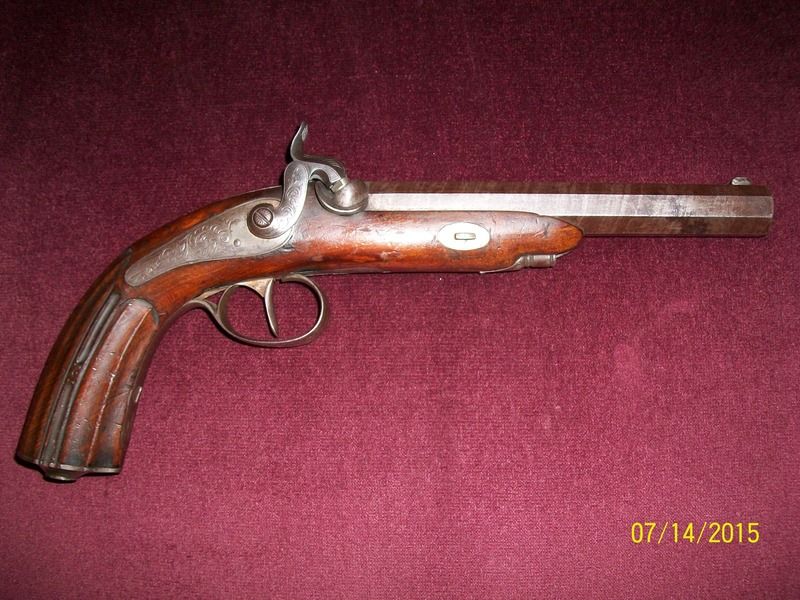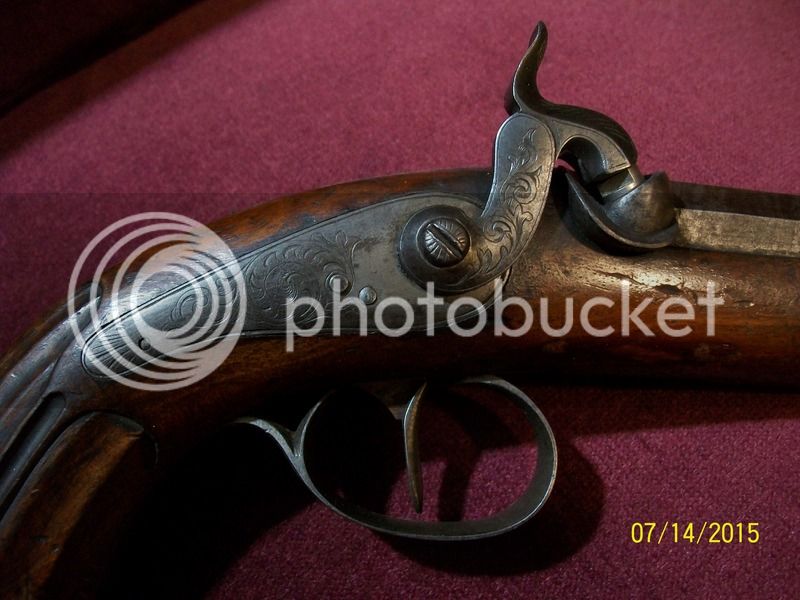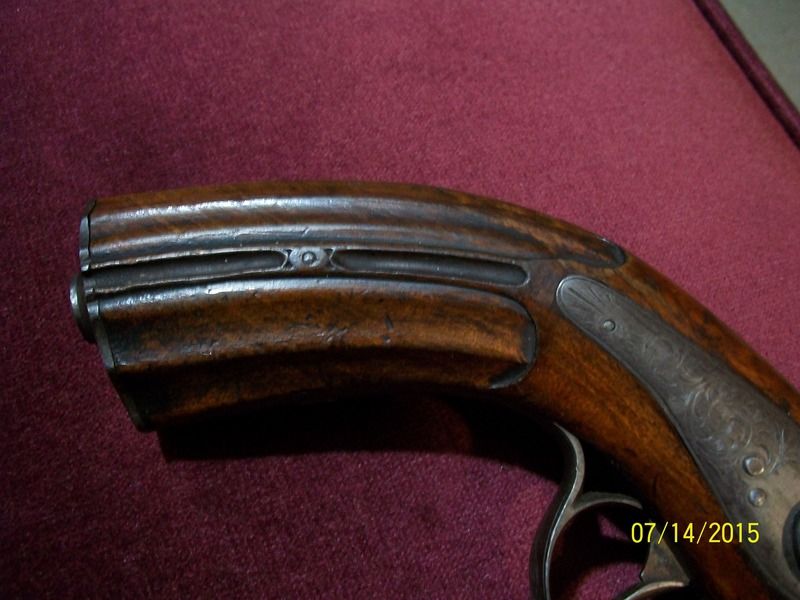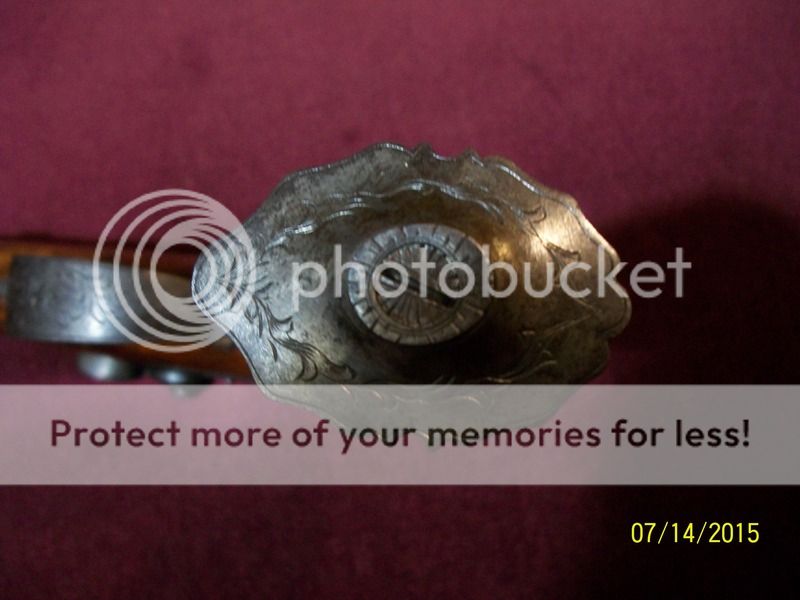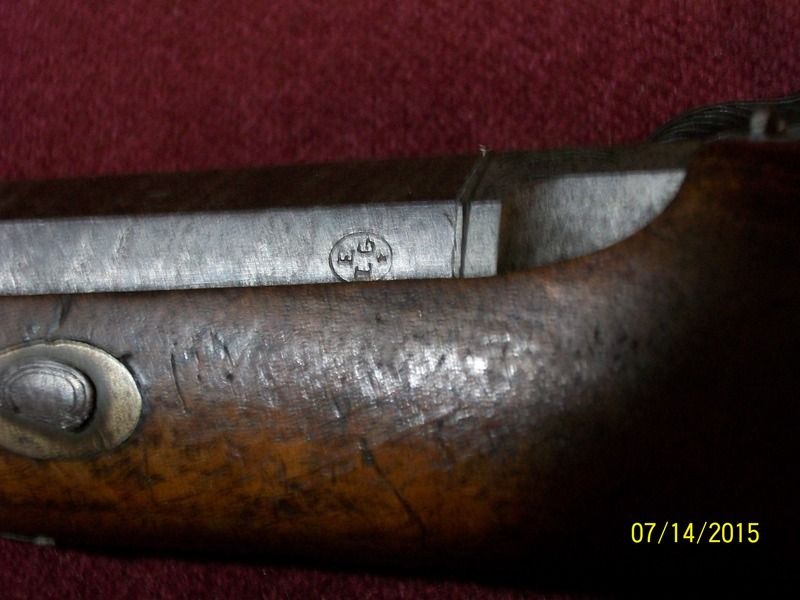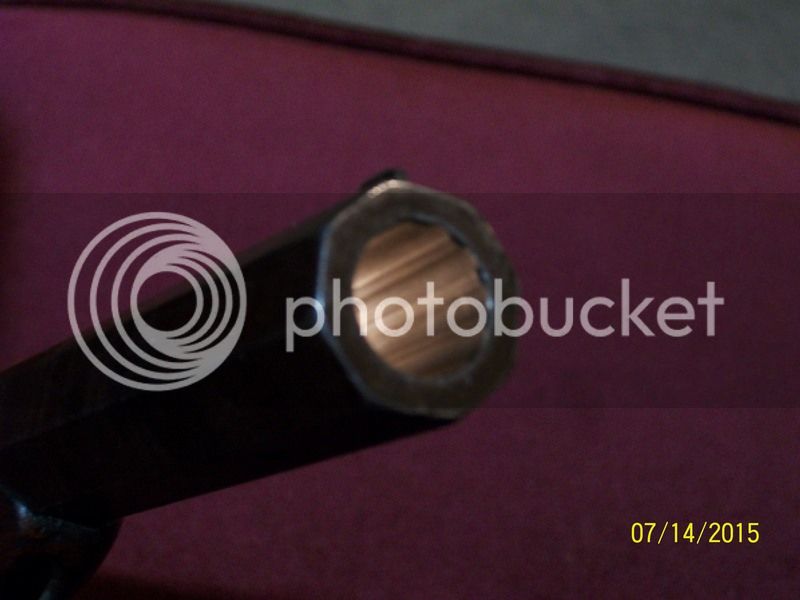Hi
I have a single shot percussion Belgian target pistol in approx' .54" cal. It is fitted with a sweet set trigger and pretty reasonable sights.
The barrel length is a tad short of 9", the bore is in very good condition and is finely rifled in the multi-groove style. I have been told by a couple of seasoned shooters that 'no one has ever done any good with a multi-grooved rifled pistol".
My question is, are they correct? Personally I have no experience of this type of rifling and was hoping to shoot the pistol in competition. Does anyone on here shoot this type of gun and if so how do you get on with it?
Your comments would be greatly appreciated.
I am hoping to post a couple of pictures later this week-end.
I have a single shot percussion Belgian target pistol in approx' .54" cal. It is fitted with a sweet set trigger and pretty reasonable sights.
The barrel length is a tad short of 9", the bore is in very good condition and is finely rifled in the multi-groove style. I have been told by a couple of seasoned shooters that 'no one has ever done any good with a multi-grooved rifled pistol".
My question is, are they correct? Personally I have no experience of this type of rifling and was hoping to shoot the pistol in competition. Does anyone on here shoot this type of gun and if so how do you get on with it?
Your comments would be greatly appreciated.
I am hoping to post a couple of pictures later this week-end.




